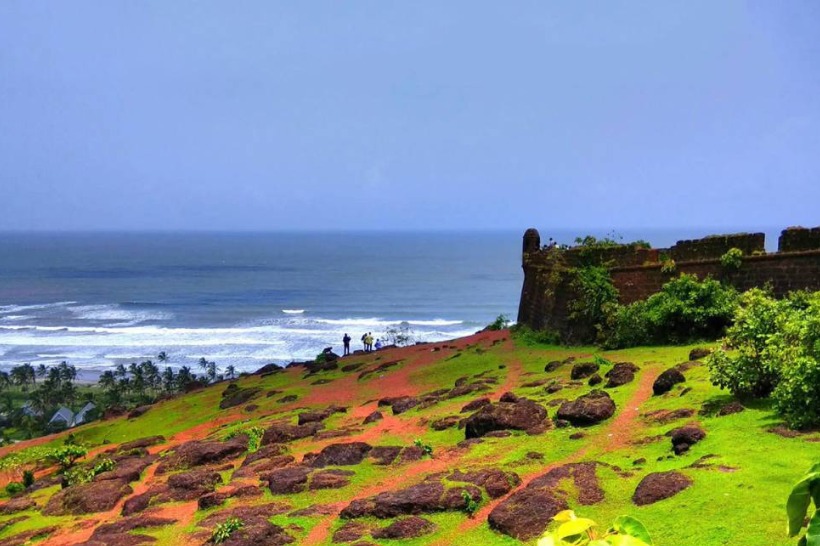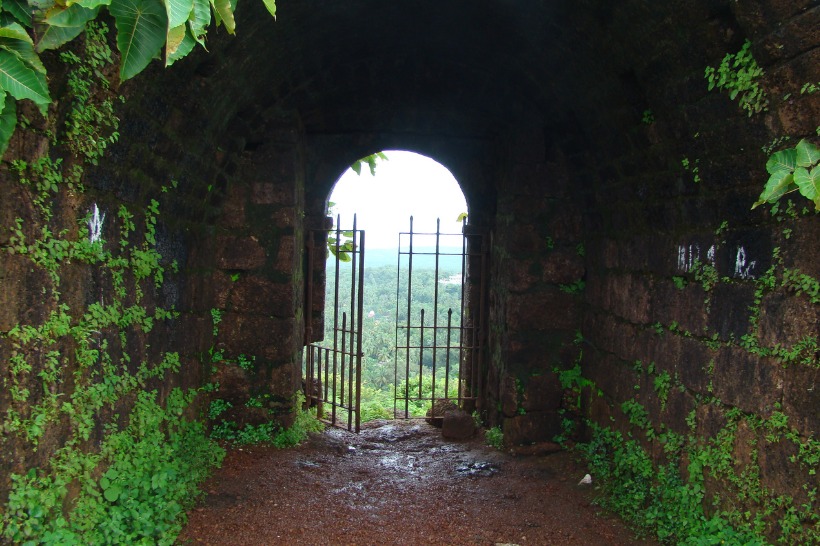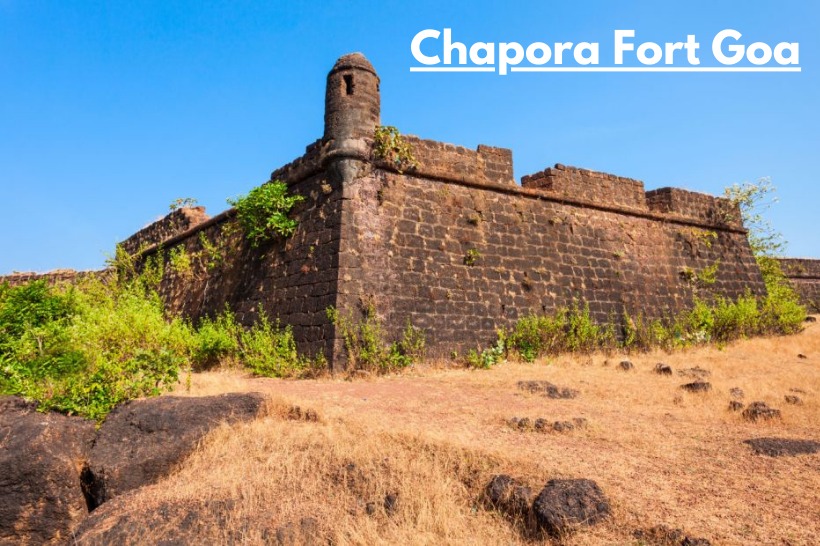Goa, known for its stunning beaches, vibrant nightlife, and rich Portuguese heritage, is a treasure trove of historical landmarks. The region witnessed the rule of various dynasties, including the Mauryas, the Satavahanas, and the Kadambas, before falling under the influence of the Portuguese in the early 16th century. The Portuguese colonisation lasted for over four centuries until Goa was finally liberated and became a part of independent India in 1961. This rich historical backdrop has significantly impacted Goa’s culture and architecture. Among the many iconic monuments that are present, Chapora Fort Goa stands as a testament to the state’s glorious past and offers a breathtaking view of the surrounding landscape.
Situated in the Bardez taluka of North Goa, Chapora Fort is perched atop a prominent hill overlooking the Chapora River and the Arabian Sea. This ancient fort has become an iconic landmark and is often referred to as “Dil Chahta Hai Fort” due to its appearance in the popular Bollywood movie of the same name. With its strategic location and historical significance, Chapora Fort has become a must-visit destination for tourists and history enthusiasts.
| Chapora Fort Timings | Open All Day |
| Chapora Fort Entry Fee | Free |
Chapora Fort: History

The origins of Chapora Fort Goa can be traced back to the 16th century when it was constructed by the Sultan of the Deccan, Adil Shah of Bijapur. The purpose behind its construction was to fortify the region and protect it from the advancing Portuguese forces, who were keen on establishing their dominance in the lucrative spice trade of Goa. However, the Portuguese eventually succeeded in capturing Chapora Fort in 1617 after a long and intense battle. They recognised the strategic significance of the fort’s location and its commanding view of the Arabian Sea and the surrounding coastline. The Portuguese took control of the fort and made several modifications to strengthen its defences, including reinforcing the walls and adding bastions.
Over the years, Chapora Fort became a vital stronghold for the Portuguese in Goa. The fort, however, remained under Portuguese rule for a while. In the mid-18th century, the Marathas, under the leadership of Maratha ruler Shahu Maharaj and his Peshwa, Bajirao I, launched a successful campaign to seize control of Goa from the Portuguese. Chapora Fort was among the forts that came under Maratha’s control during this period.
Also Read: 5 Best Things To Do In South Goa
The Marathas recognised the strategic significance of Chapora Fort and continued to use it as a The British East India Company took over Goa from the Marathas and gradually phased out the military significance of Chapora Fort. By this time, the fort had endured several battles and changes of hands, leading to some damage and deterioration. As a result, the British decided to abandon the fort, leaving it to the passage of time and the elements.
Chapora Fort: Architecture

Chapora Fort showcases a blend of Indian and Portuguese architectural styles. The fort is constructed using red laterite stones, which are commonly found in the Goan region. Its strategic position on the hill provides a panoramic view of the Arabian Sea and the nearby coastline. The fort features sturdy walls, bastions, and a main entrance that once served as a defence against enemy attacks. Although many parts of the fort are in ruins, its charm and historical aura continue to captivate visitors.
Nearby Attractions
Exploring Chapora Fort allows you to witness not only its own historical significance but also provides easy access to other nearby attractions.
Vagator Beach: Just a short distance away from Chapora Fort lies the stunning Vagator Beach. Known for its pristine white sands and crystal-clear waters, this beach offers a tranquil and picturesque setting. It is also a popular spot for water sports enthusiasts and is surrounded by a vibrant nightlife scene, with beach shacks and restaurants offering a variety of cuisines.
Anjuna Beach: Another famous beach in proximity to Chapora Fort is Anjuna Beach. This beach gained popularity in the 1960s as a haven for hippies and still retains its bohemian charm. Anjuna Beach is renowned for its weekly Wednesday flea market, where you can find a wide array of items ranging from handicrafts and jewellery to clothing and souvenirs.
Chapora Village: Adjacent to Chapora Fort, you’ll find the quaint and traditional Chapora Village. Taking a stroll through this village allows you to immerse yourself in the local Goan way of life. You can explore the narrow streets lined with colourful houses and interact with friendly locals.
Morjim Beach: Located a short distance to the north of Chapora Fort, Morjim Beach is often referred to as “Little Russia” due to the significant number of Russian tourists who frequent the area. This beach is known for its serene ambience, migratory bird sightings, and the opportunity to witness nesting turtles during certain times of the year.
Also Read: Goa Experiences to Not Miss Out On
These nearby attractions provide a diverse range of experiences, from beach hopping and water sports to exploring local culture and history. Whether you’re seeking relaxation, adventure, or cultural immersion, the vicinity of Chapora Fort offers something for everyone to enjoy.
Entry Details
Visiting Chapora Fort is free of charge, and it remains open to the public throughout the day. The best time to visit is during the early morning or late afternoon when the weather is pleasant, and the sun is not too harsh. Remember to carry comfortable footwear, as the climb to the fort can be steep in certain sections. It’s also advisable to carry drinking water and sunscreen to stay hydrated and protected from the sun’s rays.
Chapora Fort Goa is more than just a historical monument; it is a symbol of resilience and a gateway to the region’s vibrant past. Its architecture, coupled with the breathtaking views it offers, makes it a must-visit destination for travellers and history enthusiasts alike.


